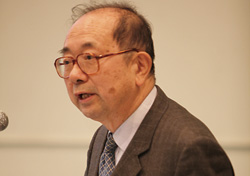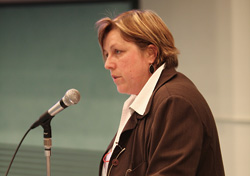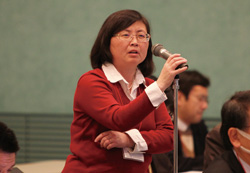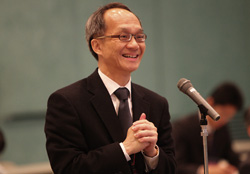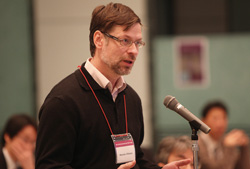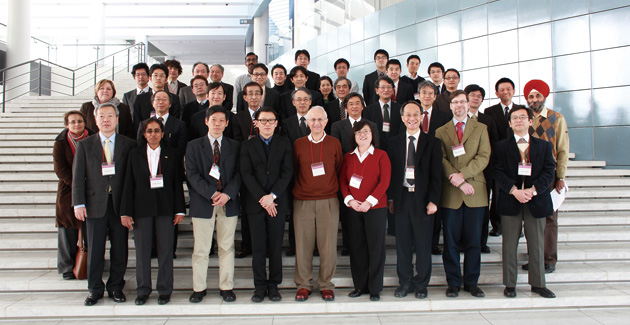PID are a genetically heterogeneous group of disorders that mainly affect distinct components of the innate and adaptive immune systems, such as neutrophils, macrophages, dendritic cells, natural killer cells, and T and B lymphocytes. The major focus of this meeting was to discuss the prevailing issues and challenges encountered in PID diagnosis and treatment. In addition to establishing an active Asian PID network among interested groups, it was hoped that this type of interaction would facilitate mutual exchange of relevant information required for timely PID diagnosis and therapeutic intervention to save many precious innocent lives.
The meeting proceedings began with a “PID network” session, chaired by Dr. Shigeru Tsuchiya, in which the status of PID in Japan was discussed by Dr. Toshiro Hara and subsequently, Dr. Kosuke Imai highlighted significant developments in the Primary Immunodeficiency Database in Japan (PIDJ) since its inception a couple of years ago. Next there was a presentation by Dr. Capucine Picard, a well-known PID expert from the French national PID reference center, Necker Hospital, Paris. She vividly explained her clinical experiences in identifying PID patients who have been susceptible to both invasive and non-invasive bacterial infections along with early/severe/transient clinical phenotypes. These PIDs affect key signaling molecules, IRAK-4 and MyD88 and Dr. Picard also delineated the functional role in IL1-beta and Toll-like receptor (TLR) dependent pathways. This session was followed by talks describing recent developments in basic and clinical PID research, including effective introduction of gene therapy protocols for the treatment of various PIDs – Wiskott Aldrich syndrome (WAS) and chronic granulomatous disease (CGD). This later topic was lucidly presented by two speakers, the first Dr. Anne Galy (photo2), INSERM Research Director at Genethon, a French not-for profit organization for biotherapies, who has been a pioneer in establishing clinical gene therapy programmes for various human diseases particularly for WAS, and now has a phase I/II gene therapy clinical trial underway, using the ex-vivo gene transfer approach. The second speaker on this topic was Dr. Joong Gon Kim, Seoul National University, Korea, who has been involved in designing gene therapy protocols using retroviral vectors for treating X-CGD patients. Dr. John Ziegler, a PID physician from Sydney Children’s Hospital, Australia then discussed the working network system of ASCIA - Primary Immunodeficiency Diseases Register of Australia and New Zealand - and explained the current status of veno-occlusive disease in these regions.
The second day of the symposium commenced with topics related to pathophysiology of PIDs and the challenges in establishing PID diagnosis. Dr. Mei W. Baker (photo3), Science Advisor, Newborn Screening Program, University of Wisconsin-Madison, USA, described the workflow of newborn screening for SCID, in which two screening systems are used: T cell receptor excision circles (TRECs) by a real-time PCR system or flowcytometric analyses of lymphocyte subpopulations. She further described patients who have been successfully treated by hematopoietic stem cell transplantation. Next, Dr. Yu-lung Lau (photo4), a well known PID physician from the Department of Paediatrics and Adolescent Medicine, The University of Hong Kong, China, explained how PID care can be successfully established among PID physicians in Asia using an e-consultation approach thereby ensuring an efficient working group for PID diagnosis. This approach would save a great deal of time and energy, and also promote free genetic diagnosis, as has already been clearly demonstrated by the e-consultation system that is now being practiced under his supervision. Dr. Mauno Vihinen (photo5), from the Institute of Medical Technology, University of Tampere, Finland, next presented an overview of novel systematic classifications of PID based on clinical, pathological and laboratory parameters using advanced computational tools for clustering and network analysis. This method should help users to understand the intricacies of genotype and phenotype correlations that could be further applied to any systems biology-based human disease classification. During this session, all participants had a nice opportunity to observe the high through-put sequencing facility that has been set up at the Department of Human Genome Research, Kazusa DNA Research Institute (KDRI), Japan under the directorship of Dr. Osamu Ohara. The final session dealt with the current status of PID clinical experiences observed among developing countries in South East Asia and included discussions about available economical therapeutic modalities to control PIDs.
At its conclusion, all of the participants agreed that this kind of meeting would provide the right ambience for initiating global collaborations through strategic research programs, thereby sharing PID information, infrastructure and laboratory facilities among the PID community.

